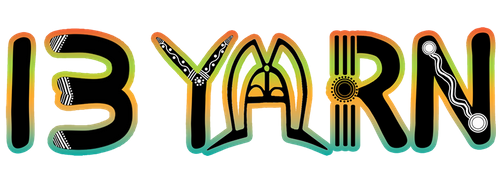Something’s not right
- Mark Discussion as New
- Mark Discussion as Read
- Float this Discussion for Current User
- Favourite
- Subscribe
- Printer Friendly Page
- Mark as New
- Favourite
- Subscribe
- Get link
- Flag for Moderator
21-08-2017 05:00 PM
21-08-2017 05:00 PM
Re: Really wobbly
hi @frog seems like you have quite a few supporters here.
i can still give you some of the coping strategies if you would still like them?
- Mark as New
- Favourite
- Subscribe
- Get link
- Flag for Moderator
21-08-2017 07:08 PM
- Mark as New
- Favourite
- Subscribe
- Get link
- Flag for Moderator
21-08-2017 07:24 PM
- Mark as New
- Favourite
- Subscribe
- Get link
- Flag for Moderator
21-08-2017 08:06 PM
21-08-2017 08:06 PM
Re: Really wobbly
sure @frog just give me a few minutes to find them for you
- Mark as New
- Favourite
- Subscribe
- Get link
- Flag for Moderator
21-08-2017 08:08 PM - edited 21-08-2017 08:09 PM
21-08-2017 08:08 PM - edited 21-08-2017 08:09 PM
Re: Really wobbly
walking mindfullness
before you start, prepare the space. Removing your shoes is good, if that’s possible. Find a place where you can walk for about 12-14 steps before you have to turn.
Now first notice your body as you stand in stillness. Feeling the connection of the body to the ground, or the floor. Becoming aware of your surroundings, taking in any sights, smells, tastes, sounds or other sensations. Notice any thoughts or emotions and let them be. Notice your arms by your sides or if you prefer, hold your right hand in your left hand at the front, or clasp your hands at your back. Notice your breath, moving in and out of your body. No need to change it; just let it be.
Now shift your weight to the left leg and begin to lift your right foot up. Move it forward, place it back down on the ground. Mindfully shift the weight the right leg and begin to lift the left foot up, move it forward, place it back down on the ground.
And continue with this walking… walking mindfully, walking slowly, and paying attention to the sensations on the soles of your feet. As each part of the sole, from heel to toe, touches the ground. Lifting, moving, placing. Lifting, moving, placing. Notice how the body moves as you walk. Walk with awareness. One step at a time.
When it is time to turn, maintain the flow of mindfulness and bring your awareness to the intricate process of turning. Slowly, and with attention to each movement necessary to turn, begin to walk back to where you started. One step at a time. Lifting, moving, placing. Lifting, moving, placing.
Find a rhythm that suits you. That suits your body and your balance. As you move forward, notice your body, notice your head sitting on your shoulders, your arms & hands, your torso, your legs, moving you forward, step by step.
Notice any thoughts that arise and let them be. Returning your focus to the sensation of walking. Lifting, moving, placing. Notice your breath. Has it moved into a rhythm; a rhythm that fits with your pace of walking, step by step? There’s no need to change your breathing, but you might find that it has changed without you noticing it.
Continue walking, taking care to notice each intricate movement required at the turns. One step at a time. Practice this for a moment.
And next time you return to your starting place, be still. Notice the sensations in your body; bring awareness to your breath. Notice the stillness when movement ceases. And appreciate the time you have spent today, practising mindfulness of walking.
- Mark as New
- Favourite
- Subscribe
- Get link
- Flag for Moderator
21-08-2017 08:10 PM
21-08-2017 08:10 PM
Re: Really wobbly
slowing down breathing
1. Work out the pace and speed that works best for you.
2. Breathe in for the count of three.
3. Breathe out for the count of three.
4. Continue to do this and each time slow the count to three very slightly.
5. Don’t force the slowing down process – just allow your counting to gently keep time with a minor slowing down or the breathing for each time you repeat the exercise.
6. When you have slowed your breathing down and notice that you have come to a pace that feels comfortable then stay at that pace, continuing to count your breath in to the count of three and out to the count of three.
A variation to this exercise is instead of counting the breaths in and out you may wish to spell them in – you might wish to spell “c-a-l-m” or “r-e-l-a-x”
1. When you breathe in, spell the letters – “c-a-l-m” (or “r-e-l-a-x”).
2. When you breathe out, spell the letters – “c-a-l-m” (or “r-e-l-a-x”).
3. Each time you repeat the exercise slow the spelling down a little.
4. When you get to a slower pace that feels comfortable then stay at that pace, continuing to spell your breath in and to spell your breath out.
- Mark as New
- Favourite
- Subscribe
- Get link
- Flag for Moderator
21-08-2017 08:11 PM
21-08-2017 08:11 PM
Re: Really wobbly
quick tense and release
1. Focus first on your hands.
2. Clench your fists tightly for a few seconds -hold for the count of 3 seconds, counting them out – 1, 2, 3. You may wish to progressively hold for 4 seconds, then 5 or even more. Make sure you are able to do this reasonably comfortably.
3. Release the tension all in one go – make sure that the tension is released all at once with a feeling of floppiness at the end.
4. Repeat this with your hands and lower arms.
5. Repeat this with your hands and your whole arms.
6. Repeat this exercise with your feet, then feet and lower legs, then feet and whole of legs.
7. Finally hold the muscles of your entire body tense, hold for the count of 3 and at 3 release all tension from your body.
- Mark as New
- Favourite
- Subscribe
- Get link
- Flag for Moderator
21-08-2017 08:12 PM
21-08-2017 08:12 PM
Re: Really wobbly
54321 exercise
These are exercises in noticing what is around us:
Sight: Look around you and name as you look at 5 different objects (variation: 5 blue/black/green objects), then do the same for 4 of those 5 objects, 3 of those 5 objects, etc.
Sight & Touch: Look at, name and touch 5 different objects, noticing their texture, temperature, mass and weight as you do so. Then do the same for 4 of those objects, 3 of those objects, etc.
Sight, Touch and Smell/Taste: Look at (in a garden or a kitchen), name, taste and smell 5 different objects, noticing their colours, texture, taste and aroma. Then do the same for 4 of those objects, 3, 2, and 1.
Hearing: Close your eyes and listen for 5 different sounds. Then 4, 3, 2, and 1.
- Mark as New
- Favourite
- Subscribe
- Get link
- Flag for Moderator
21-08-2017 08:14 PM
21-08-2017 08:14 PM
Re: Really wobbly
mindfullness using the external world
Close your eyes and bring into your mind a place that for you has elements of peacefulness, calm and relaxation – this may be a real place that you have been to in your life or it may be a place that you are creating in your imagination from bits and pieces of memories or real places
Once you have started to develop a picture of this place in your mind, start to fill in some of the details in your imagination;
Look around you in that place and notice what objects you can see.
Can you hear anything?
Is it warm, cool, hot, cold in that place?
Is there sunlight, shadow, are you indoors, outdoors?
Is the natural world present in this place? What can you notice?
Is there a breeze or is the air still?
Notice where you are. Try to place yourself in the very middle of this place you have created in your mind – notice what is around you when you are in the middle of it.
Once you have created the place in your mind – this place that is calm, peaceful and relaxation – just allow yourself to stay there for a little while and enjoy it.
When you are ready to leave look around you for one thing in that place that you could take home as a memento or souvenir. This could be something that you could hold in your hand – if it is imagine it is now in your hand – or it could be an image, a sound or a sensation that you can carry in your memory. Once you have chosen your memento or souvenir, then take it with you as you gently open your eyes and take note of your surroundings.
Finally, remembering your souvenir or memento, close your eyes again and use this souvenir as a key to take you back to this place that is peaceful, calm and relaxation. Once you are back there enjoy being there for a few seconds before taking your souvenir/memento and opening your eyes and noticing your surroundings.
You now know that this is a place you can go to any time, anywhere – you have the souvenir/memento which can be the key to take you there.
Use this exercise as a way of capturing this place in your imagination when you need it
- Mark as New
- Favourite
- Subscribe
- Get link
- Flag for Moderator
21-08-2017 08:16 PM
21-08-2017 08:16 PM
Re: Really wobbly
grounding exercises
Remind yourself of who you are now. Say your name. Say your age now. Say where you are now. Say what you have done today. Say what you will do next.
“My name is ________, and I am 54 years old. I am in my living room, in my home, in Woolloongabba, in Brisbane, in Queensland. I woke up early today. I had a shower and fed my dog. I just finished my coffee and toast. Soon I am going to walk to the train station and go in to work. I am going to walk down ______ street and then turn left at the bike shop. Then I am going to….”
Take ten slow breaths. Focus your attention fully on each breath, on the way in and on the way out. Say number of the breath to yourself as you exhale.
Splash some water on your face. Notice how it feels. Notice how the towel feels as you dry.
Sip a cool drink of water.
Hold a cold can or bottle of soft drink in your hands. Feel the coldness, and the wetness on the outside. Note the bubbles and taste as you drink.
If you wake during the night, remind yourself who you are, and where you are. Tell yourself who you are and where you are. What year is it, what age are you now? Look around the room and notice familiar objects and name them. Feel the bed you are lying on, the warmth or coolness of the air, and notice any sounds you hear.
Feel the clothes on your body, whether your arms and legs are covered or not, and the sensation of your clothes as you move in them. Notice how your feet feel to be encased in shoes or socks.
If you are with other people, and you feel comfortable with them, concentrate closely on what they are saying and doing, and remind yourself why you are with them.
If you are sitting, feel the chair under you and the weight of your body and legs pressing down onto it. Notice the pressure of the chair, or floor, or table against your body and limbs.
If you are lying down, feel the contact between your head, your body and your legs, as they touch the surface you are lying on. Starting from your head, notice how each part of your body feels, all the way down to your feet, on the soft or hard surface.
Stop and listen. Notice and name what sounds you can hear nearby. Gradually move your awareness of sounds outward, so you are focusing on what you can hear in the distance.
Hold a mug of tea in both hands and feel its warmth. Don’t rush drinking it; take small sips, and take your time tasting each mouthful.
Look around you, notice what is front of you and to each side. Name and notice the qualities of large objects and then smaller ones.
Get up and walk around. Take your time to notice each step as you take one, then another.
Stamp your feet, and notice the sensation and sound as you connect with the ground.
Clap and rub your hands together. Hear the noise and feel the sensation in your hands and arms.
Wear an elastic band on your wrist (not tight) and flick it gently, so that you feel it spring back on your wrist.






